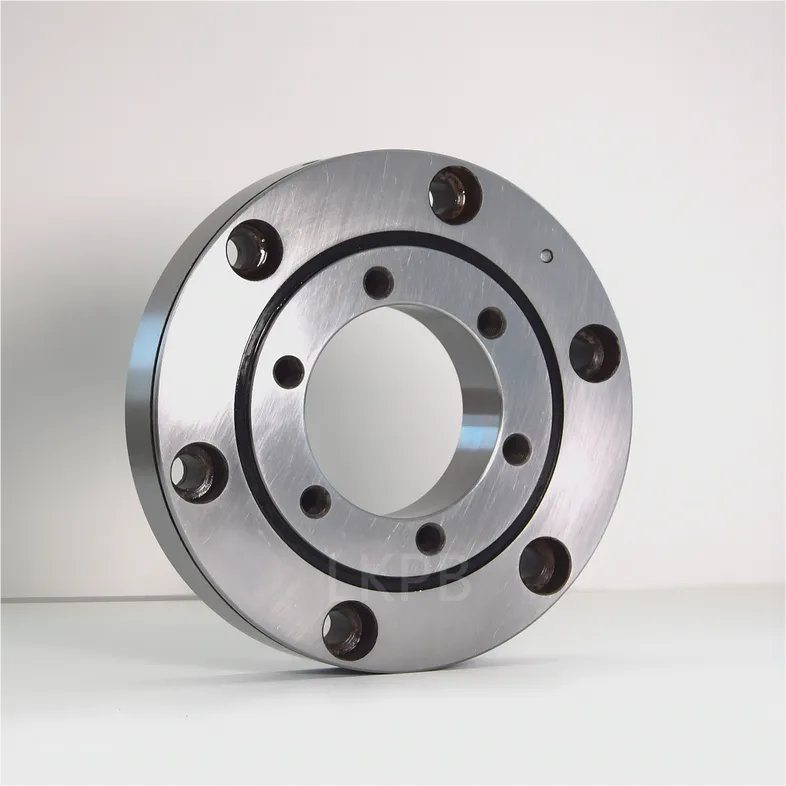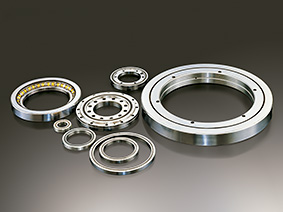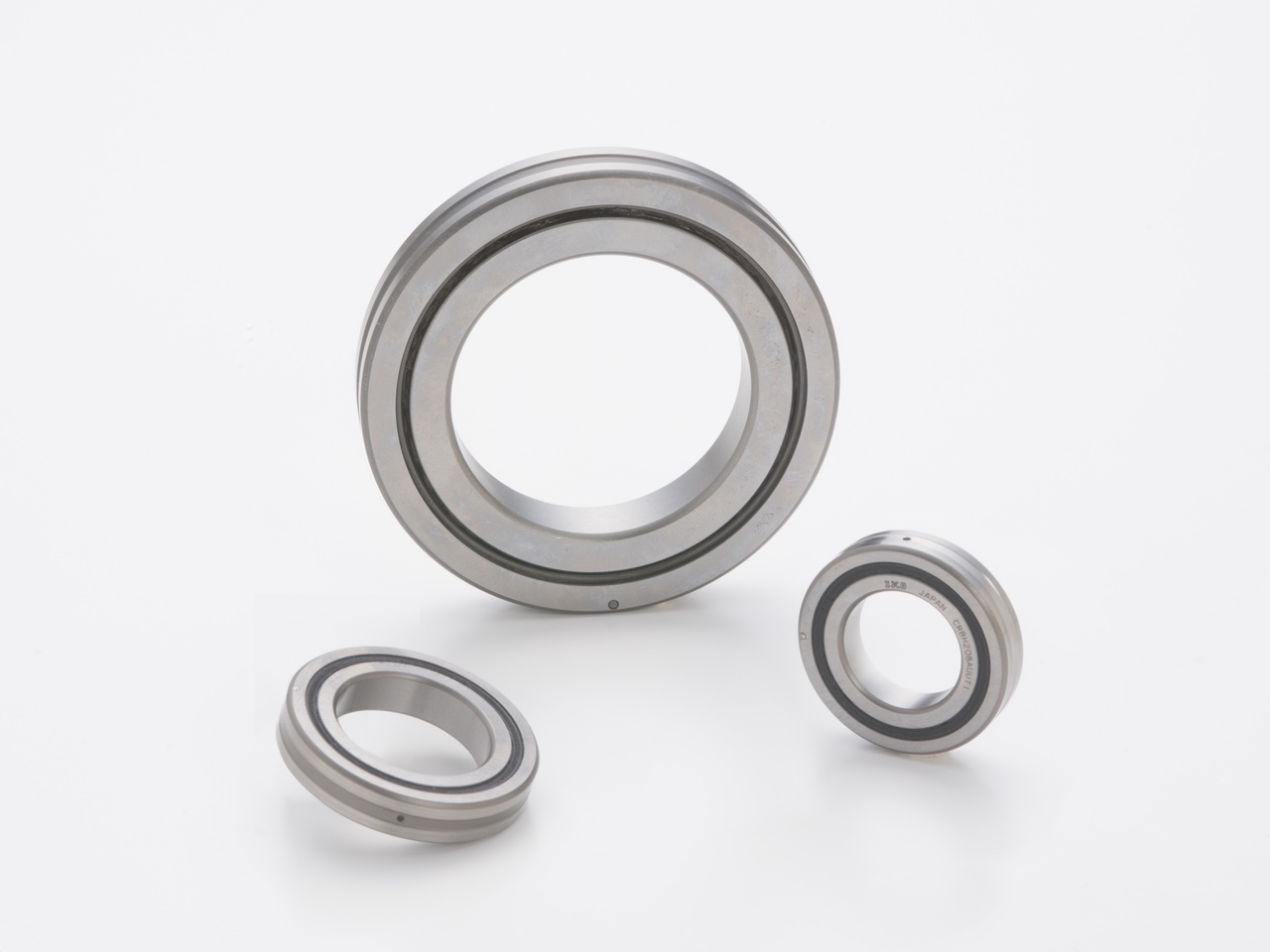Product Description
CZPT is a professional manufacturer in slewing ring bearings since 1993. We can also design and make other standard and non-standard ball slewing ring bearings, roller slewing bearings and precision slewing ring bearings as per customer’s different technical requirements.
Slewing ring bearing is also called slewing ring, slewing bearing, turntable bearing, and rotary bearing.
Slewing ring bearing is a bearing that CZPT to bear axial load, radial load and overturning torque. Under normal circumstances, slewing ring bearings have their own mounting holes, lubricant holes and seal holes, to meet the different needs of the various host working under the various conditions;
On the other hand, slewing ring bearing itself has characteristics of compact structure, CZPT rotating convenient, easy to install and maintaining easily.
Slewing Ring Bearings——Types:
1. 4 point contact ball slewing ring bearings
2. double row ball 4 point contact slewing ring bearings(same diameter ball; different diameter ball)
3. cross roller slewing ring bearings
4. triple row cylindrical roller combined slewing ring bearings
5. ball roller combined slewing ring bearings
6. light flanged slewing ring bearings
Slewing Ring Bearings——Technical Data:
1. Material: 42CrMo, 50Mn
2. Precision: P0. P6. P5.
3. Outside diameter: 200~9500mm
4. Cage/retainer: Nylon or aluminum
5. Gear type: non-geared, internal gear and external gear, gear hardened
Slewing Ring Bearings——Applications:
Slewing ring bearings are widely used in industry and known as “the machine joints”
Hereunder is the specific slewing bearing applications
1. Construction machinery (e.g. cranes, excavators, loader, scraper)
2. Metallurgical machinery (e.g. for steel plant)
3. Heavy machinery equipments (e.g. mining machinery, concrete machinery)
4. Marine machinery equipment (e.g. vessel, port hoisting machine, port oil transfer equipment, onshore and offshore crane)
5. Light machinery equipments (e.g. paper machine, plastic, rubber machine, weave machine)
6. Wind power generator
7. Military products (e.g. aerospace machinery)
8. Packing machinery
Slewing Ring Bearings——Packaging Details:
Step 1: Covered with the anti-rust oil
Step 2: wrapped with the plastic film;
Step 3: Packed with Kraft paper and professional belts;
Step 4: Put into wooden box to avoid the rust or the moist;
Remark: Normally, plastic film+ Kraft +belt+ wooden box, but customized packing available,
Our Advantages:
1. Good quality and competitive price
2. Trial order accepted
3. ISO certified company
4. OEM and ODM accepted
5. Manufacturing slewing ring bearings since 2000
LYHY Slewing bearing models:
Cross roller slewing bearings with external teeth
V18E089
V25E139
V18E083
V25E013
V18E082
V25E195
V25E197
V30E081
V25E248
V25E131
V30E150
V25E062
V30E013
V25E250
V30E088
V30E123
V30E087
V30E151
V40E571
V40E571
V40E571
Cross roller slewing bearings with internal teeth
V18I082
V18I089
V25I185
V25I001
V25I192
V25I161
V25I040
V30I132
V30I013
Cross roller slewing bearings without teeth
V18S077
V25S084
V18S080
V18S074
V25S085
V25S091
V30S018
V30S571
/* January 22, 2571 19:08:37 */!function(){function s(e,r){var a,o={};try{e&&e.split(“,”).forEach(function(e,t){e&&(a=e.match(/(.*?):(.*)$/))&&1
| Standard or Nonstandard: | Standard |
|---|---|
| Feature: | Cold-Resistant, Corrosion-Resistant, Heat-Resistant |
| Sealing Gland: | Sealed On Both Sides |
| Rolling-Element Number: | Single-Row |
| Roller Type: | Deep Groove Raceway |
| Material: | 50mn 42CrMo |
| Samples: |
US$ 600/Piece
1 Piece(Min.Order) | |
|---|
| Customization: |
Available
| Customized Request |
|---|
How do different types of cross roller bearings, such as single and double split, differ in terms of design and functionality?
Various types of cross roller bearings, including single split and double split designs, exhibit differences in their design and functionality. These variations affect factors such as load capacity, rigidity, ease of installation, and axial displacement capability. Here’s a detailed explanation of the differences between single split and double split cross roller bearings:
- Single Split Cross Roller Bearings:
- Double Split Cross Roller Bearings:
Single split cross roller bearings consist of two separate parts – an inner ring and an outer ring. The inner ring is designed with a single split, allowing the bearing to be easily assembled and disassembled around the equipment shaft or housing. This design simplifies the installation process and reduces the need for complex adjustments. Single split cross roller bearings typically have a higher load capacity compared to double split designs, making them suitable for applications that require greater radial and axial load handling.
Double split cross roller bearings consist of three separate parts – an inner ring and two outer rings. Both the inner and outer rings have double splits, allowing the bearing to be easily separated into individual components. The double split design provides enhanced rigidity and axial displacement capability compared to single split bearings. Double split cross roller bearings can accommodate higher axial loads and have improved resistance to moment loads, making them suitable for applications that require increased rigidity and load-carrying capacity.
In terms of functionality, both single split and double split cross roller bearings offer advantages in different scenarios. Single split bearings are often preferred in applications where ease of installation, disassembly, and maintenance are critical factors. They are commonly used in machine tools, industrial robots, and other equipment that requires frequent assembly or adjustment. Single split bearings provide flexibility and convenience during installation and servicing processes.
On the other hand, double split cross roller bearings excel in applications that demand higher rigidity, increased load capacity, and improved resistance to moment loads. The double split design enhances the bearing’s ability to handle axial loads and maintain stability under challenging operating conditions. Double split bearings are commonly used in precision machinery, robotics, aerospace systems, and other applications where high rigidity and load-carrying capacity are essential.
In summary, the main differences between single split and double split cross roller bearings lie in their design and functionality. Single split bearings feature a simpler two-part design, allowing for easy assembly and disassembly. They offer higher load capacity but may have limitations in terms of rigidity and axial displacement capability. Double split bearings, with their three-part design, provide enhanced rigidity, improved axial load handling, and increased resistance to moment loads. The choice between single split and double split cross roller bearings depends on the specific requirements of the application, balancing factors such as load capacity, rigidity, ease of installation, and axial displacement capability.
What considerations are important when selecting the appropriate size and material for a cross roller bearing?
When selecting the appropriate size and material for a cross roller bearing, several considerations are crucial to ensure optimal performance and longevity. The following factors should be taken into account:
- Load Requirements:
- Space Limitations:
- Rotational Speed:
- Accuracy and Precision:
- Environmental Conditions:
- Maintenance and Service Life:
- Budget and Cost:
Determine the expected load that the bearing will need to support. Consider both the magnitude and direction of the load, including radial, axial, and moment loads. Cross roller bearings are known for their high load capacity in all directions, but it is important to select a size and material that can handle the specific load requirements of the application.
Consider the available space for the bearing within the application. Cross roller bearings have a compact design, but it is essential to choose a size that fits within the allotted space while allowing for proper clearance and mounting considerations. Take into account the dimensions of the bearing, including inner and outer diameters, width, and overall profile.
Determine the rotational speed at which the bearing will operate. Different materials and designs have specific limitations on rotational speed due to factors such as heat generation, lubrication requirements, and the potential for dynamic effects like centrifugal forces. Select a bearing size and material that can safely accommodate the anticipated rotational speed without compromising performance or causing premature wear.
Consider the required level of accuracy and precision for the application. Cross roller bearings are known for their excellent positioning accuracy and low friction characteristics. However, different designs and materials may offer varying levels of precision. Determine the specific tolerance and precision requirements of the application and select a bearing that can meet those criteria.
Evaluate the environmental conditions in which the bearing will operate. Factors such as temperature, humidity, exposure to chemicals or corrosive substances, and the presence of contaminants can influence the choice of bearing material. Select a material that can withstand the specific environmental conditions of the application to ensure optimal performance and longevity.
Consider the desired maintenance requirements and service life expectations. Some bearing materials may require more frequent lubrication or maintenance than others. Additionally, different materials and designs have varying levels of durability and service life. Assess the maintenance capabilities and resources available and select a bearing that aligns with the desired maintenance schedule and service life requirements.
Take into account the budget and cost considerations. Different bearing sizes and materials may have varying price points. Balance the desired performance and longevity with the available budget to select a bearing that offers the best value for the specific application.
By carefully considering these factors, it is possible to select the appropriate size and material for a cross roller bearing that meets the specific requirements of the application. Choosing the right bearing will help optimize performance, ensure reliability, and extend the service life of the bearing in the given application.
Can you explain the design principles of cross roller bearings and their functions?
Cross roller bearings are designed based on specific principles to achieve their unique performance characteristics. The design principles of cross roller bearings encompass various aspects, including the arrangement of rollers, the structure of rings, and the preload mechanism. Understanding these design principles helps in comprehending the functions and advantages of cross roller bearings. Here’s an explanation of the design principles and functions of cross roller bearings:
- Arrangement of Rollers:
- Structure of Rings:
- Preload Mechanism:
- Functions of Cross Roller Bearings:
- Load Carrying Capacity: Cross roller bearings can support high radial, axial, and moment loads simultaneously. The cross arrangement of rollers allows for efficient load distribution, enabling the bearings to handle complex loads with high capacity.
- Compact and Space-Saving: The arrangement of rollers and the thin-walled ring structure contribute to the compactness of cross roller bearings. They occupy less space compared to other bearing types, making them suitable for applications with limited installation space.
- High Rigidity and Precision: The crossed roller design and the preload mechanism enhance the rigidity and precision of cross roller bearings. They minimize clearance, reduce deflection, and provide accurate positioning and motion control, making them ideal for applications that require high precision and stability.
- Moment Load Capability: Cross roller bearings can withstand both radial and axial moments. This capability enables them to support rotational movements and resist forces acting perpendicular to the bearing axis, making them suitable for applications with complex loads and moments.
- Low Friction and Wear: The rolling motion of cylindrical rollers reduces sliding friction, resulting in improved efficiency and reduced heat generation. Advanced lubrication techniques and high-quality materials further minimize friction and wear, contributing to extended bearing life and reduced maintenance requirements.
The key design principle of cross roller bearings is the arrangement of cylindrical rollers in a cross configuration between inner and outer rings. The rollers are oriented at right angles to each other and are alternately crossed, forming an X-shaped pattern. This arrangement allows for efficient load distribution, enabling cross roller bearings to support both radial and axial loads simultaneously. The crossed roller design enhances the load-carrying capacity while maintaining a compact profile.
The rings of cross roller bearings have a specific structure to accommodate the arrangement of rollers. The inner and outer rings are typically thin-walled, which helps reduce weight and improve the flexibility of the bearing. The thin-walled structure also contributes to the compactness of cross roller bearings, making them suitable for applications with limited space. The rings are precision-machined to ensure accuracy and rigidity, providing a stable foundation for the rollers.
Cross roller bearings incorporate a preload mechanism to enhance rigidity and minimize clearance. Preloading refers to applying a controlled axial force on the bearing components to eliminate any internal clearance. This axial force is achieved through various methods, such as using spacers, adjusting the ring thickness, or applying a preloading spring. The preload mechanism ensures that the rollers are in constant contact with the raceways, reducing backlash and improving the bearing’s precision and rigidity.
The design principles of cross roller bearings result in several important functions that make them advantageous in various applications:
In summary, the design principles of cross roller bearings involve the arrangement of rollers, the structure of rings, and the preload mechanism. These principles result in cross roller bearings with functions such as high load-carrying capacity, compactness, high rigidity and precision, moment load capability, and low friction and wear. Understanding these design principles and functions helps in appreciating the advantages and applications of cross roller bearings in various industrial sectors.
editor by CX 2024-04-03




